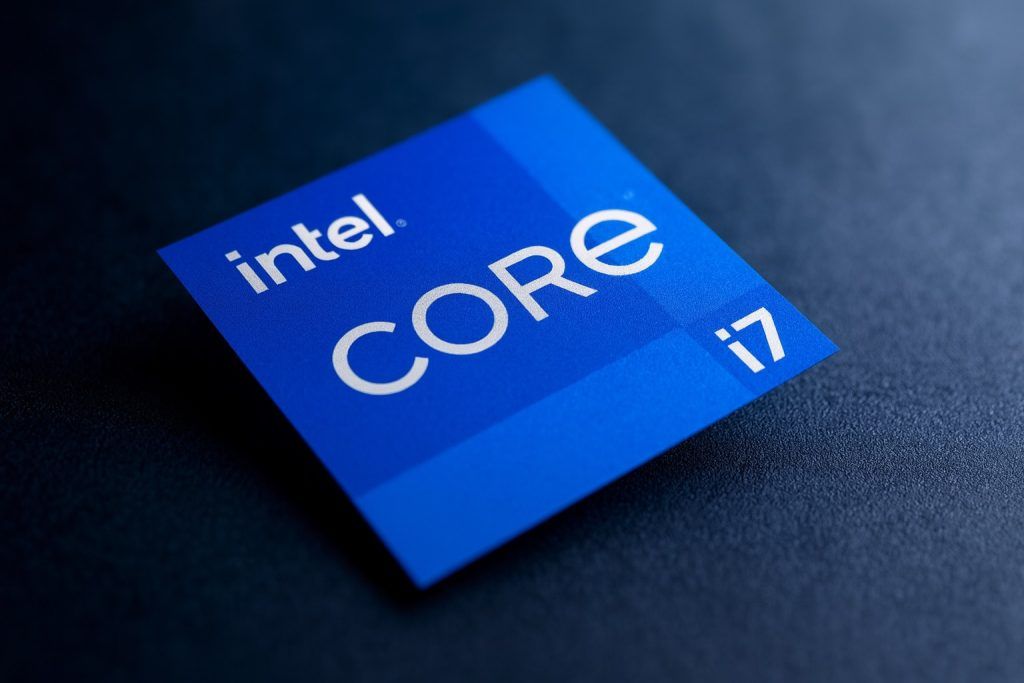- Soaring Year-to-Date: BigBear.ai Holdings (NYSE: BBAI) has seen its stock skyrocket by roughly 80–100% in 2025, translating to a 314% gain over the past 12 months [1]. Much of this came from an early October rally – shares spiked 22% in one day (Oct. 13) on a new defense AI deal and briefly hit multi-year highs near $9.39 before retreating [2]. The volatile small-cap now trades around the mid-$7 range (last close ~$7.05) [3] [4], with double-digit intraday swings not uncommon [5].
- Defense AI Deals Fueling Rally: Recent military-tech partnerships have supercharged BigBear.ai’s momentum. On Oct. 13, the company partnered with Tsecond to integrate its ConductorOS AI software with rugged “BRYCK” edge-computing hardware for U.S. tactical forces [6]. Shortly after, on Oct. 23, BigBear deployed its “veriScan” facial recognition system at Chicago O’Hare Airport, slashing international arrivals processing from ~60 seconds to 10 seconds for pre-vetted travelers [7]. These wins – along with a September Navy surveillance project with partner SMX – showcase BigBear’s expanding role in defense and security applications.
- Mixed Financial Picture: Despite the defense buzz, latest earnings show challenges. Q2 2025 revenue fell ~18% year-over-year to $32.5 million, and a one-time accounting hit drove a massive $228.6 million net loss for the quarter [8]. Management slashed full-year 2025 sales guidance to $125–$140 million (from ~$155 million) and withdrew profit forecasts amid project delays [9]. On the bright side, BigBear ended Q2 with a huge cash cushion (~$390 million) and a $380 million contract backlog, giving it runway to invest and an indicator of future revenue potential [10].
- Analysts Cautious on Valuation:Wall Street’s consensus on BBAI is neutral, with most analysts rating it a “Hold” and an average 12-month price target around $6 – notably below the current stock price [11]. Bulls vs. Bears Divide: One bullish outlier, H.C. Wainwright, recently reiterated a Buy and raised its target to $8, praising BigBear’s “strengthened balance sheet” and booming government AI spending (even advising investors to “consider accumulating” shares on dips) [12]. But many experts warn BigBear’s valuation is stretched – the stock trades at roughly 13× projected 2025 sales, a level that “already prices in a lot of optimism,” according to one market report [13]. A Simply Wall St model estimates fair value near $5.83, implying the stock is ~20% overvalued at recent prices [14].
- AI Hype vs. Execution Reality: BigBear.ai is often touted as a “mini-Palantir” for its focus on military and intelligence AI [15]. Like Palantir – whose stock has also soared ~300% in 2025 – BigBear is positioned to tap into surging defense-tech budgets [16]. However, BigBear’s scale is tiny by comparison (≈$30 million quarterly revenue vs. Palantir’s billions [17]), and it remains heavily reliant on a few large federal contracts. Any delays or hiccups in those deals could undercut the growth narrative. All eyes are on Nov. 10, when BigBear reports Q3 results, as a key test of whether 2025’s new contracts are translating into real growth [18]. The highly volatile stock could swing sharply on the earnings news, potentially reigniting the rally or erasing recent gains depending on what the company delivers [19].
Latest Stock Performance and Current Price
BigBear.ai’s stock has been on a rollercoaster run in 2025. After starting the year as a little-known penny stock, BBAI caught fire amid the AI boom [20], riding a wave of speculative enthusiasm for defense-related AI plays. Year-to-date the share price has roughly doubled (up ~80–100%), and in the past 12 months it’s up over 300% in total return [21] – making BigBear one of the year’s hottest small-cap AI names. Much of that gain came in a few explosive moves: for instance, on October 13 the stock jumped about 22% in a single day after BigBear announced a major military tech partnership, and the next day it briefly touched $9.39 – its highest level in years [22].
However, that euphoria quickly gave way to profit-taking. In the second half of October, BigBear.ai’s stock pulled back below $8, dipping back to roughly where it stood pre-rally as traders locked in gains and broader market jitters set in [23]. As of the end of last week, BBAI was hovering around the mid-$7 range (it closed at approximately $7.05 on October 24) [24]. Even at this level, the stock is still about double its price from January – a testament to 2025’s momentum – but the recent volatility underscores its high-risk, high-reward nature. BigBear.ai often swings 10% or more in a single session [25], and such dramatic moves have become routine this year. Notably, BBAI has outperformed the broader market by a wide margin in recent months (up ~27% in the past quarter alone, far ahead of the S&P 500 and tech sector averages) [26]. The challenge now is whether the stock’s “wild ride” can continue upward or if it has overrun its fundamentals.
Key Company Developments Driving Sentiment
BigBear.ai’s recent rally has been underpinned by a flurry of new contracts and strategic projects, especially in the defense and security arena. The centerpiece was unveiled on October 13, when BigBear announced a partnership with Silicon Valley firm Tsecond, Inc. aimed at delivering AI capabilities to the tactical edge of the battlefield. The deal integrates BigBear’s flagship ConductorOS AI orchestration software with Tsecond’s rugged BRYCK portable hardware, creating deployable “edge AI” systems for U.S. military use [27]. This means soldiers in the field could run BigBear’s analytics and machine-learning models on-site, processing sensor data “within seconds” even without cloud connectivity [28]. BigBear’s CEO, Kevin McAleenan, described the collaboration as a step toward “mission-ready AI at the tactical edge,” emphasizing that “Edge AI must be fast, secure, and simple to deploy under pressure” so troops can detect threats in real time [29]. Investors greeted the Tsecond news as validation of BigBear’s strategy – the stock’s 22% one-day jump on Oct. 13 was a direct reaction to optimism that BigBear could ride a wave of Pentagon tech modernization [30]. Additionally, BigBear has been extending its defense footprint through smaller projects – for example, it teamed up with security analytics firm SMX to provide AI-driven maritime surveillance for the U.S. Navy’s UNITAS 2025 naval exercises in late September [31]. In that initiative, BigBear’s software helped monitor maritime data and improve situational awareness during multinational war game drills, underscoring the company’s role in cutting-edge military operations.
At the same time, BigBear.ai is proving its AI tech has civilian applications in security and travel. Notably, on October 23 the company expanded its veriScan biometric screening platform to Chicago O’Hare International Airport, one of the busiest airports in the world. VeriScan uses facial recognition to verify travelers’ identities, allowing certain pre-cleared international arrivals (e.g. U.S. citizens in CBP’s Global Entry program) to bypass traditional passport lines. The O’Hare deployment – part of a U.S. Customs and Border Protection initiative to streamline entry – cuts the average processing time from around 60 seconds to just 10 seconds per passenger [32]. “This is a major advancement in securing and accelerating international arrivals,” CEO McAleenan said of the Chicago rollout [33]. It follows BigBear’s initial veriScan launch at Nashville International Airport in September, where the system similarly lets eligible travelers skip manual passport checks using AI-driven face scans [34]. These airport wins show BigBear’s ability to extend its government-grade AI solutions into commercial and infrastructure settings – a key part of its growth narrative. Together, the high-profile defense partnership (Tsecond) and the airports rollout (veriScan) have raised BigBear.ai’s profile and lent credibility to its product capabilities. They demonstrate tangible demand for the company’s technology in real-world missions, from battlefields to border control, which in turn has helped fuel the stock’s speculative surge this month.
Market and Industry Context: AI Defense Boom and Competition
BigBear.ai’s rise comes against the backdrop of a broader boom in defense-oriented AI investment. Washington is pouring unprecedented funding into artificial intelligence for military and security uses. In fact, a massive spending package nicknamed the “One Big Beautiful Bill” (OB3) was recently rolled out, allocating $150 billion to the U.S. Department of Defense and $170 billion to Homeland Security specifically for advanced AI and security technologies [35]. This generational wave of government spending on AI – estimated at $300+ billion in coming years for the Pentagon alone [36] – provides a strong tailwind for companies like BigBear. The company has strategically positioned itself in the sweet spot of these trends, focusing on AI solutions for national security, defense, and intelligence needs. Its software has been used in cutting-edge programs like autonomous Army drone swarms and biometric border control systems at airports, aligning directly with federal priorities [37]. BigBear’s leadership has been vocal that the firm is “in the right place at the right time” to capitalize on these tailwinds [38]. The recent contracts – from the Tsecond deal to the Navy and airport projects – lend credence to that claim, suggesting BigBear could secure a slice of the burgeoning defense-AI budget. This narrative has even drawn comparisons between BigBear.ai and Palantir Technologies, the much larger defense analytics contractor that has become a stock market star. In defense tech circles BigBear is sometimes dubbed a “mini-Palantir” [39], since both companies provide AI-driven analytics to military and government clients. Palantir’s own stock has skyrocketed roughly 300% in 2025, as investors cheer its string of multibillion-dollar government AI contract wins [40]. The Palantir analogy underscores the excitement around BigBear – if Palantir’s success is any indicator, there is serious money to be made at the intersection of AI and defense, and BigBear aims to follow that path.
That said, BigBear.ai operates in a fiercely competitive arena dominated by bigger, better-funded players. Palantir (PLTR) itself is perhaps BigBear’s most direct competitor and benchmark. Palantir has deep roots in government intelligence and a decade-long head start delivering data platforms at scale; it has also successfully branched into commercial sectors like healthcare and finance [41]. By contrast, BigBear.ai is still a fraction of Palantir’s size – for perspective, BigBear’s quarterly revenue (~$30 million) is tiny next to Palantir’s billions [42], highlighting the gap it needs to close. Beyond Palantir, enterprise AI firm C3.ai (AI) also poses competition, especially as BigBear looks beyond defense into areas like logistics and industrial analytics. C3.ai has aggressively pursued business with energy, manufacturing and supply chain customers, sectors that overlap with BigBear’s expansion plans in commercial AI [43]. In essence, BigBear is trying to carve out a niche while straddling two worlds: going up against established defense contractors on one side, and trying to win deals in the broader enterprise AI market on the other. The company is attempting to level the playing field by leveraging its specialized focus and recent cash infusion. It’s even extending its reach overseas – during 2025 BigBear forged partnerships in the Middle East (UAE) and Latin America (Panama) to develop AI solutions for foreign government and industry clients [44]. (This mirrors Palantir’s global strategy of partnering with allied nations to deploy its tech abroad.) Still, BigBear’s international forays introduce new risks (unfamiliar procurement processes, geopolitical factors) and put it in direct competition with giants on the world stage. In summary, BigBear.ai is operating in an environment of immense opportunity – a defense-driven AI “gold rush” – but it faces formidable rivals and must execute extremely well to emerge as a lasting player.
Expert Quotes and Analysis: Bulls vs. Bears on BBAI
Financial analysts remain divided on BigBear.ai’s prospects, given the contrast between its explosive stock and its nascent financials. On one hand, most of Wall Street is playing it safe: the consensus rating is “Hold,” with an average 12-month price target around $6.00 [45]. That target sits roughly 20–25% below the current share price – a sign that many analysts believe the stock has run ahead of itself. Skeptics point out that BigBear’s fundamentals haven’t yet caught up to its valuation. At around 13× forward sales, BBAI’s stock price implies a rich premium for future growth [46]. “The current price already prices in a lot of optimism,” one market report warned, suggesting the recent surge may be baking in best-case scenarios that could fail to materialize [47]. Some independent researchers echo this caution: for instance, Weiss Ratings recently slapped BigBear with a “D–” (Sell) grade, flagging the company’s highly speculative profile and financial weaknesses [48]. Even technical analysis points to elevated risk – one algorithmic review noted that “this stock may move much during the day… [and is] considered ‘high risk’” due to its frequent double-digit swings [49]. Furthermore, a valuation model by Simply Wall St estimates BigBear’s fair value at roughly $5.83 per share, which is about 20% lower than where it’s trading [50]. All these signals convey a common theme from the bears: proceed with caution. The company’s contract wins and government buzz are promising, but execution and earnings have yet to catch up to the stock’s lofty pricing.
On the other hand, bullish voices argue the upside could justify the volatility if BigBear.ai can deliver on its potential. H.C. Wainwright, a boutique investment bank, stands out with a decidedly optimistic take. The firm recently reaffirmed its Buy rating on BBAI and raised its price target to $8.00, citing the company’s “strengthened balance sheet” (after its large cash raise) and the expectation of surging defense AI expenditures in BigBear’s favor [51]. Wainwright even advised investors to “consider accumulating” BigBear shares on pullbacks [52], underscoring its conviction that current weakness could be a buying opportunity. Bulls also note that BigBear’s ~$390 million cash war chest and $380 million backlog give it resources and revenue visibility uncommon for a company of its size [53]. From a technical standpoint, some analysts see positive momentum as well – StockInvest’s AI model, for example, recently projected a +19% rise for BBAI over the next three months based on momentum indicators and a “pivot bottom” formed in late October [54]. These optimistic assessments hinge on the belief that BigBear.ai is at the forefront of a transformative trend (AI for defense and critical infrastructure) and is one of the few pure-play small caps in that arena. The bull case is essentially that if BigBear’s technology gains traction (and contracts turn into repeat business), the company could grow into its valuation and then some – making temporary setbacks in the share price a buying chance rather than a warning sign. As one market blogger put it, “BBAI’s success depends on converting its contract backlog into steady revenue” – if that happens, today’s valuation concerns could fade [55]. But for now, opinion is sharply split. Depending on whom you ask, BigBear.ai is either an undiscovered gem riding a secular AI boom or a overhyped penny stock one disappointment away from a hard landing.
Short-Term and Long-Term Forecast
In the immediate term, all eyes are on November 10, 2025, when BigBear.ai will report its third-quarter results. This earnings announcement is shaping up to be a major catalyst – and a potential make-or-break moment – for the stock. Given how sensitive BBAI shares have been to news, any surprises in the Q3 report could trigger outsized volatility. A strong report, showing accelerating revenue from those new defense contracts or improved margins, could reignite the stock’s rally and send shares climbing again. But if results disappoint – say, if revenue growth is anemic or losses remain steep – analysts warn the stock may “give back much of its recent gains.” The stakes are high because the market has already priced in a lot of optimism from BigBear’s recent deal announcements. “Highly volatile” stocks like BBAI “could swing sharply depending on what the company delivers,” one report noted, so investors should brace for a big move either way when earnings hit [56] [57]. In the meantime, expect continued choppiness. Headline-by-headline trading will likely persist; positive contract news or government funding updates tend to spur spikes, while any hint of delay or disappointment can send shares tumbling. Short-term traders are actively playing this name, which means volatility will remain elevated. In summary, over the next few weeks BBAI’s trajectory will largely hinge on momentum and the Nov. 10 reveal – a classic case of a high-flyer that could soar higher on good news or sink if the numbers fail to justify the hype.
Looking further ahead, the long-term outlook for BigBear.ai boils down to whether the company can turn its promising pipeline into sustainable growth and profits. Bulls paint an enticing future: BigBear is aiming to become an indispensable provider of AI for defense, intelligence, and critical infrastructure, markets that could be enormous over the coming decade. If management executes well, even some moderately optimistic forecasts suggest significant upside. For instance, one analysis (from Trefis) imagines BigBear’s stock could rebound toward $20+ per share within a couple of years – roughly doubling from current levels – assuming the company rapidly converts its hefty backlog into revenue and scales up successfully [58]. With potentially hundreds of billions in federal AI spending on the table in the 2025–2030 period [59], BigBear doesn’t need to beat the giants to win big; capturing even a small fraction of defense and security contracts could dramatically boost its top line. Furthermore, BigBear’s strong cash position provides a runway to invest in R&D, pursue acquisitions, and weather losses in the interim, increasing the odds of long-term success. However, the bearish view is that the road ahead may be as bumpy as the stock chart. BigBear.ai still faces serious hurdles: lumpy and unpredictable government sales cycles, the challenge of diversifying beyond a few key contracts, and the need to eventually turn a profit in a highly competitive industry. The company’s own guidance indicates 2025 revenue will likely decline vs. 2024 (after the Army contract delays) [60], so a true growth re-acceleration might not be seen until 2026 – assuming new deals ramp up. In the long run, BigBear will have to prove it can move from exciting “demos” and pilot projects to large, steady programs that generate recurring revenue. If it can, the current valuation might be justified and even modest. If not, the stock’s gravity-defying rise could correct sharply once the initial hype fades.
Bottom line: BigBear.ai offers a unique high-risk, high-reward story. Short-term, expect volatility to remain extreme – with the next big swing likely riding on the upcoming earnings and any new contract announcements. Long-term, BigBear’s fate will hinge on execution: the company has positioned itself in front of a huge opportunity (AI for defense and security) and has the cash and contracts in hand to potentially ride that wave. If management can turn today’s defense AI buzz into tangible, growing revenue – and eventually profits – in the next few years, BigBear could evolve from a speculative bet into a legitimate powerhouse (and early investors’ bullish bets may pay off handsomely). If not, the stock’s current price may prove to be an overinflated peak. Either way, the ride is likely to stay wild. As one analyst put it, BigBear.ai’s journey is just beginning, and its stock may continue to trade on big dreams versus big data until the company shows whether it can translate its bold vision into bottom-line results [61].
Sources: BigBear.ai analysis – TechStock² (ts2.tech) [62] [63] [64] [65]; The Economic Times [66] [67] [68] [69]; CoinCentral [70] [71] [72] [73]; Nasdaq/Zacks [74]; BigBear.ai Q2 filings & releases [75].
References
1. ts2.tech, 2. coincentral.com, 3. ts2.tech, 4. coincentral.com, 5. ts2.tech, 6. coincentral.com, 7. coincentral.com, 8. economictimes.indiatimes.com, 9. economictimes.indiatimes.com, 10. economictimes.indiatimes.com, 11. economictimes.indiatimes.com, 12. economictimes.indiatimes.com, 13. ts2.tech, 14. ts2.tech, 15. ts2.tech, 16. ts2.tech, 17. economictimes.indiatimes.com, 18. economictimes.indiatimes.com, 19. economictimes.indiatimes.com, 20. ts2.tech, 21. ts2.tech, 22. coincentral.com, 23. ts2.tech, 24. ts2.tech, 25. ts2.tech, 26. ts2.tech, 27. coincentral.com, 28. coincentral.com, 29. coincentral.com, 30. coincentral.com, 31. coincentral.com, 32. coincentral.com, 33. coincentral.com, 34. economictimes.indiatimes.com, 35. www.nasdaq.com, 36. ts2.tech, 37. www.nasdaq.com, 38. www.nasdaq.com, 39. ts2.tech, 40. ts2.tech, 41. www.nasdaq.com, 42. economictimes.indiatimes.com, 43. www.nasdaq.com, 44. ts2.tech, 45. coincentral.com, 46. coincentral.com, 47. ts2.tech, 48. coincentral.com, 49. ts2.tech, 50. ts2.tech, 51. economictimes.indiatimes.com, 52. economictimes.indiatimes.com, 53. economictimes.indiatimes.com, 54. coincentral.com, 55. coincentral.com, 56. ts2.tech, 57. economictimes.indiatimes.com, 58. economictimes.indiatimes.com, 59. ts2.tech, 60. ts2.tech, 61. ts2.tech, 62. ts2.tech, 63. ts2.tech, 64. ts2.tech, 65. ts2.tech, 66. economictimes.indiatimes.com, 67. economictimes.indiatimes.com, 68. economictimes.indiatimes.com, 69. economictimes.indiatimes.com, 70. coincentral.com, 71. coincentral.com, 72. coincentral.com, 73. coincentral.com, 74. www.nasdaq.com, 75. ts2.tech





